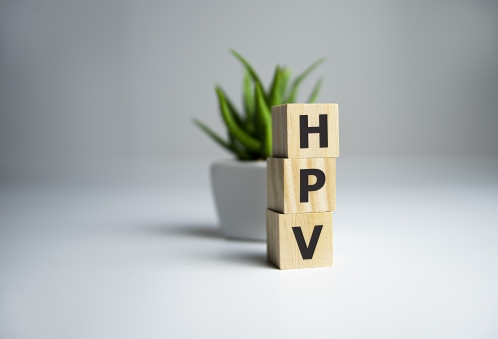What are genital warts?
Genital warts are small flesh-coloured growths having a cauliflower-like appearance. They can arise on the genital area of both men and women as well as around the anus. Genital warts are caused by a virus known as the human papillomavirus (HPV). It is one of the most common sexually transmitted infection, which means that you can catch it during sex. Some of the strains of HPV can only cause genital warts while others can lead to cancer.
Even if genital warts can arise in both men and women, it affects more women compared to men. In the United States, around 75% of people who are sexually active have been infected with at least one genital HPV type at some point in time. With the increased vaccination against HPV around the words, the prevalence of genital warts have declined. Genital wart is more common among young people compared to older ones.
There are several treatment options available for genital warts to remove the skin growths. A vaccine is also available to prevent infection from various strains of HPV.
What causes Genital warts?
Genital warts are caused by the HPV virus which is a sexually transmitted infection. The strains responsible for genital warts are HPV 6 and/or HPV 11. The virus is transmitted through sexual contact, that is, with infected skin or mucous membranes. Absence of warts does not necessarily mean that a person does not have the infection. Some people may not have the skin lesions but can still be spreading the infection to their partner.

Once you catch the virus, you may enter a period known as the latent phase during which no signs or symptoms manifest. HPV can also be transmitted through childbirth in a pregnant women who has genital warts.
What are the risk factors for genital warts?
The following factors increase your risk of having genital warts:
- Sexual activity: This is due to the close contact between skin and mucous membranes of the genitals. The risk is higher if no protection is used during sexual intercourse. The risk also increases with the number of sexual partners you have. The younger you become sexually active also increases your risk.
- Immunosuppression: Having a low immune system due to coexisting diseases or autoimmune conditions can make you more prone to have genital warts. It can also lead to a treatment-resistant form of genital warts. Some common causes of immunosuppression include Human immunodeficiency virus (HIV), immunosuppressant therapy or diabetes.
- Smoking: Smoking increases your risk of having genital warts. The risk increases with increasing number of cigarettes smoked per day.
What are the signs and symptoms of genital warts?
Genital warts are typically located on the labia, opening of the vagina, penis, groin, around or inside the anus. However, it can also develop in the mouth or throat of someone who has had oral sex with an infected individual. The signs and symptoms include the following:

- Fleshy skin-coloured growths on the genital area, which can appear as cauliflower shaped
- Impaired defecation if the warts have invaded the anal area
- Itching
- Discomfort in genital area
- Bleeding after sexual intercourse
Making the diagnosis
Most of the time, the diagnosis of genital warts is made simply during physical examination as the lesions are easily recognized due to their characteristic appearance. Your doctor will have a look at the affected area and may also need to have a look inside the vagina or feel inside of the anal canal. In some cases, special tests may be requested including:
- Pap smear: Cervical cancer is caused by HPV virus too. For women, it is recommended to regularly do Pap tests to screen for any abnormalities in your vagina and on your cervix. In this procedure, a speculum is inserted into your vagina to enable proper visualization of and access to the cervix. A special brush is used to scrape off some cells from your cervix and this sample is sent for further examination under the microscope.
- Biopsy: If the lesions do not have the typical appearance of genital warts, a biopsy may be done to confirm the diagnosis. This involves using a blade or scissor to remove the suspected lesion for further analysis in a laboratory. This is useful to rule out the presence of cancer.
- Testing for other sexually transmitted infections: Your doctor may advise you to test for other sexually transmitted infections as you may be at risk if you have genital warts.

How are genital warts treated?
Genital warts can be managed with the use of different treatment modalities including medications or procedures. However, even with treatment, recurrence of the genital warts may occur in the following weeks or months. This is because the resolution of genital warts does not necessarily mean complete elimination of the virus in the body.
The choice of treatment will depend on the location and extent of the disease. Your doctor will know best which treatment will suit you the most. Treatment options include the following:
- Podophyllin: This is a medication that destroys tissue present in the warts. It is a solution that needs to be applied directly to the warts using a cotton swab. The solution has to be washed away 1-4 hours later. The treatment may last for at least 4-6 weeks, until the lesions resolve. Some side effects that can arise from the use of Podophyllin include skin irritation or ulcers. The use of Podophyllin is not recommended in pregnant women.
- Bichloroacetic acid and trichloroacetic acid: These are acids that are used to destroy tissue in the warts. This should be applied by a doctor or a nurse. It is applied once a week for about 4-6 weeks or until resolution. They are safe to be used during pregnancy.
- Imiquimod: This is a cream that stimulated your immune system so that it gets rid of the warts. This is usually applied at bedtime over the warts and washed away after 10 hours. It is used three times a week for around 16 weeks. Some mild side effects include irritation and redness. It is not safe to be used during pregnancy.
- Interferon: This medication works by causing an immune response against the warts. The most effective way to deliver the medication is through direct injection into the lesions. Some side effects include flu-like symptoms, fatigue, pain and lack of appetite.
- Cryotherapy: This involves the use of a very low temperature to freeze the wart. This can be done in the doctor’s office and can be done without anaesthesia. There may be some pain after the procedure as well as skin irritation, swelling or ulceration.
- Electrocautery: This procedure uses electrical energy to burn the lesions. This requires anaesthesia.
- Excision: The warts are surgically removed in an operating room under anaesthesia.
- Laser: This involves the use of light energy to destroy warts. This is done in an operating room under anaesthesia to prevent pain.

Despite using the above treatment modalities, the genital warts can still recur within months.
How can genital warts be prevented?
There are vaccines available for the prevention of genital warts. Some examples include Gardasil and Cervarix. The vaccine is used only as a preventive measure. This means that it cannot treat the infection or warts if you already have them.

Avoid having sexual intercourse with people who have genital warts. Condoms are not very effective against the transmission of genital warts.
Source:
Rosen, T., 2020. Condylomata Acuminata (Anogenital Warts) In Adults: Epidemiology, Pathogenesis, Clinical Features, And Diagnosis.
Carusi, D., 2020. Condylomata Acuminata (Anogenital Warts): Treatment Of Vulvar And Vaginal Warts.



